If in Laos the new year begins with the April rains, in Vietnam as in China, it begins with the first flowers of spring, and, among them, the “têt flower.” In Laos, where many Vietnamese live, the flowers appear before the leaves and you can see in the streets, since mid-January, these bare branches buried in containers of water in front of houses and shops. Indeed, the goal is for the flower buds to open exactly on the day of the feast, thus guaranteeing a prosperous and happy year. Once the party is over, the brilliant yellow flowers of this shrub bloom in our streets. Shortly after, the small round fruits appear, first green, then black, emerging from bright red sepals.
This lucky plant has a bitter bark which makes it a very good digestive tonic, it is also listed among the 30 main medicinal plants harvested in the forest reserve of Houaiyang, Laos, in 2005.
Si au Laos la nouvelle année commence avec les pluies d’avril, au Vietnam comme en Chine, elle débute avec les premières fleurs du printemps, et, parmi celles-ci la “fleur du têt.” Au Laos, où vivent de nombreux Vietnamiens, les fleurs apparaissent avant les feuilles et on peut voir dans les rues, depuis la mi-janvier, ces branches dénudées enfoncées dans des récipients d’eau devant maisons et magasins. En effet, le but recherché est que les bourgeons floraux s’ouvrent exactement le jour de la fête, garantissant ainsi une année prospère et heureuse. Une fois la fête passée, les fleurs d’un jaune brillant de cet arbuste s’épanouissent dans nos rues. Peu après apparaissent les petits fruits ronds, d’abord verts, puis noirs, émergeant de sépales rouge vif.
Cette plante porte-bonheur possède une écorce amère qui en fait un très bon tonique digestif, elle est d’ailleurs répertoriée parmi les 30 principales plantes médicinales récoltées dans la réserve forestière de Houaiyang, au Laos, en 2005.
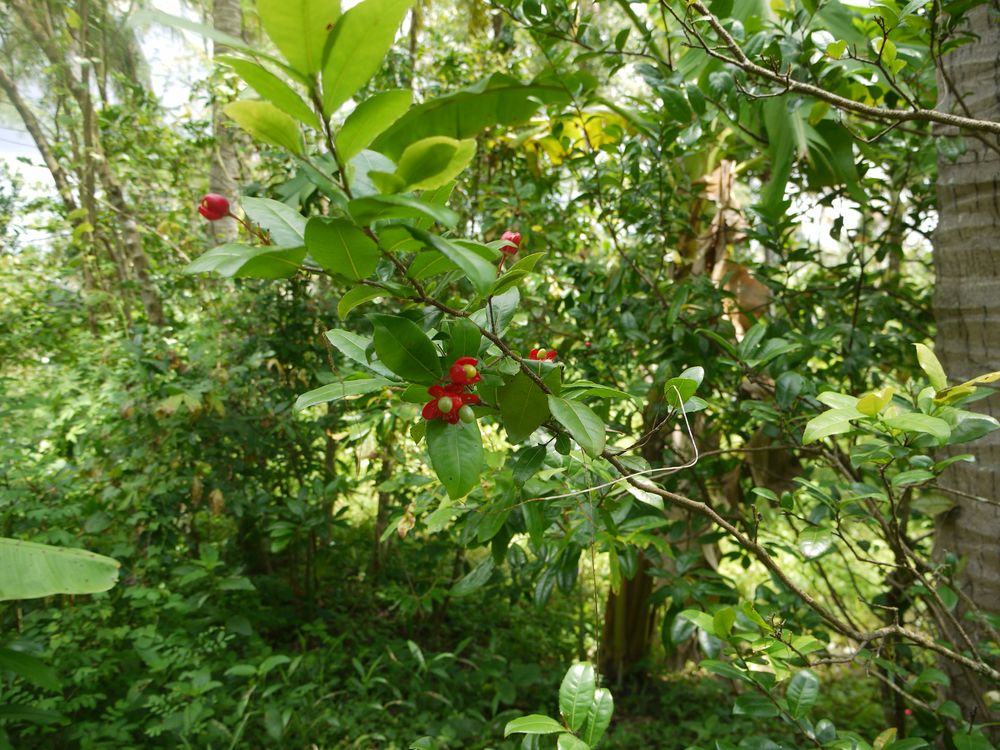
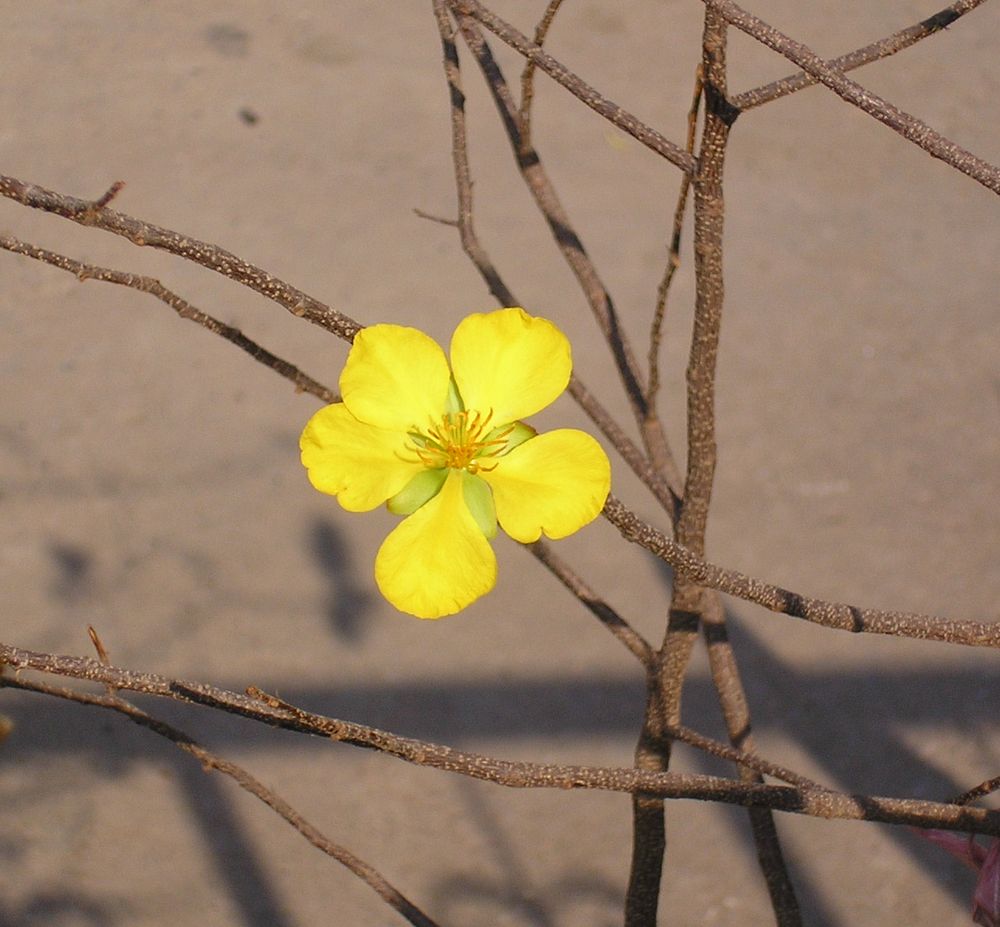
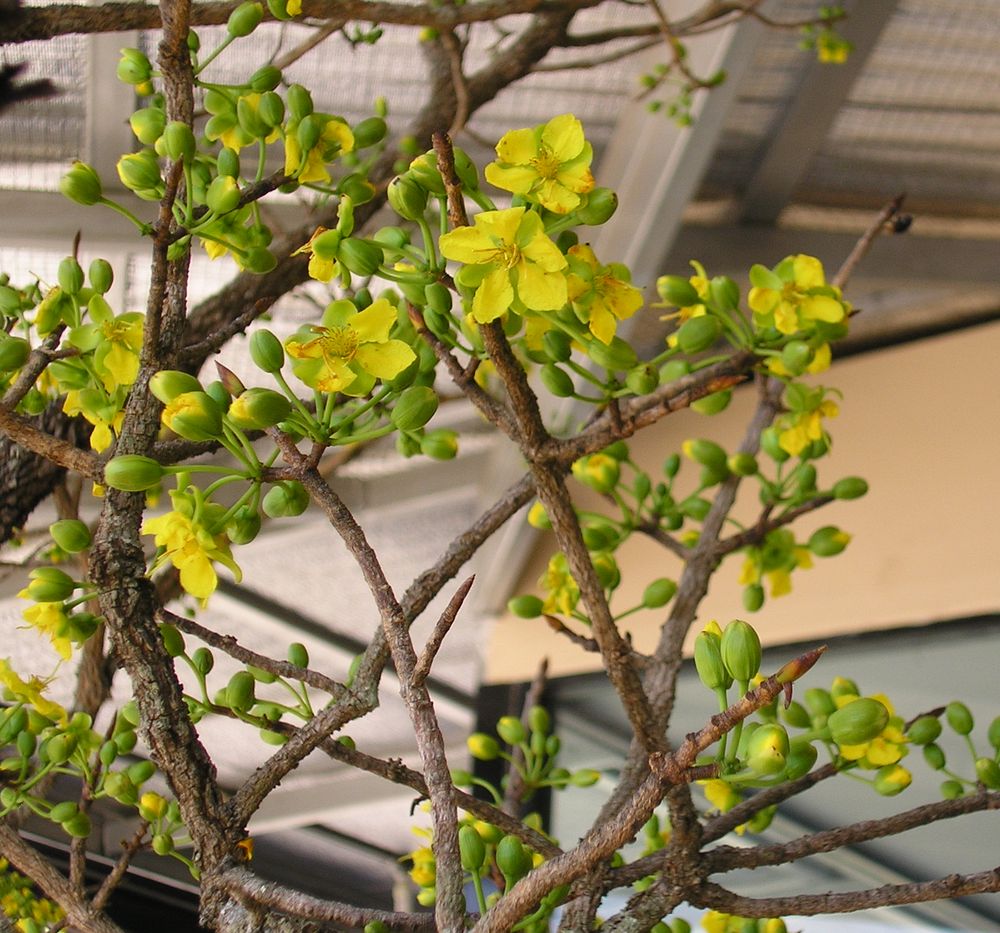
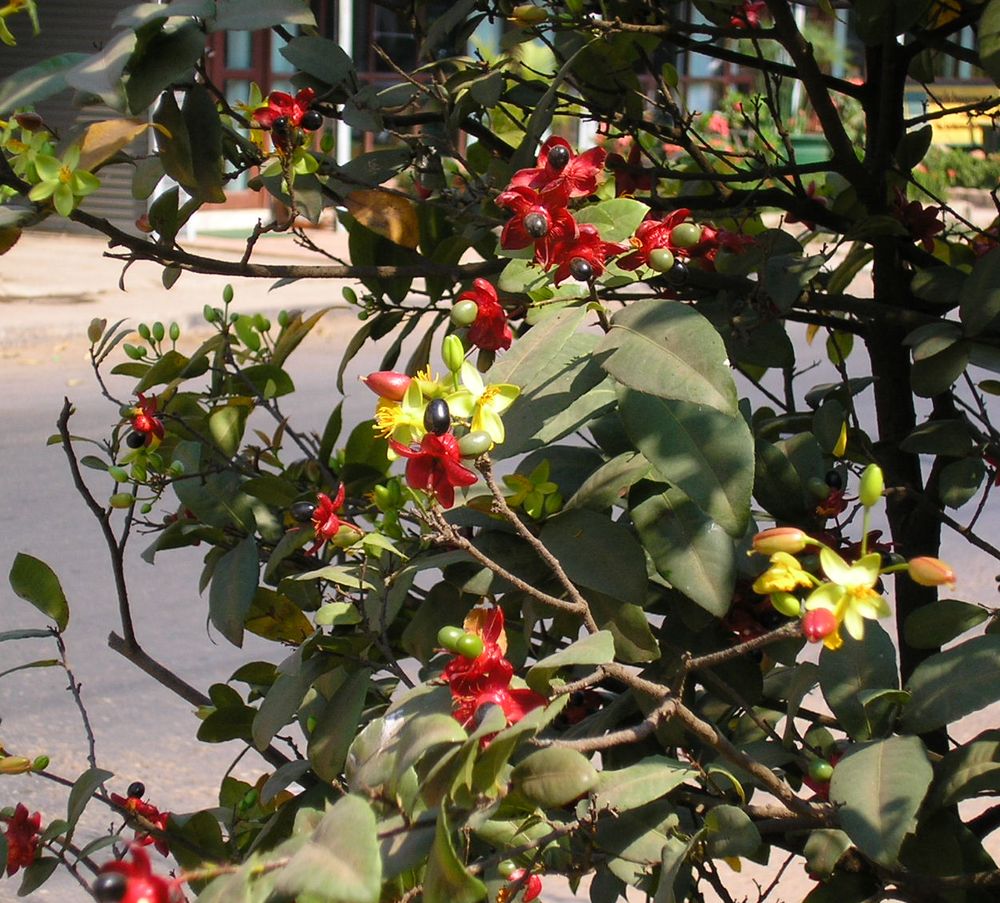
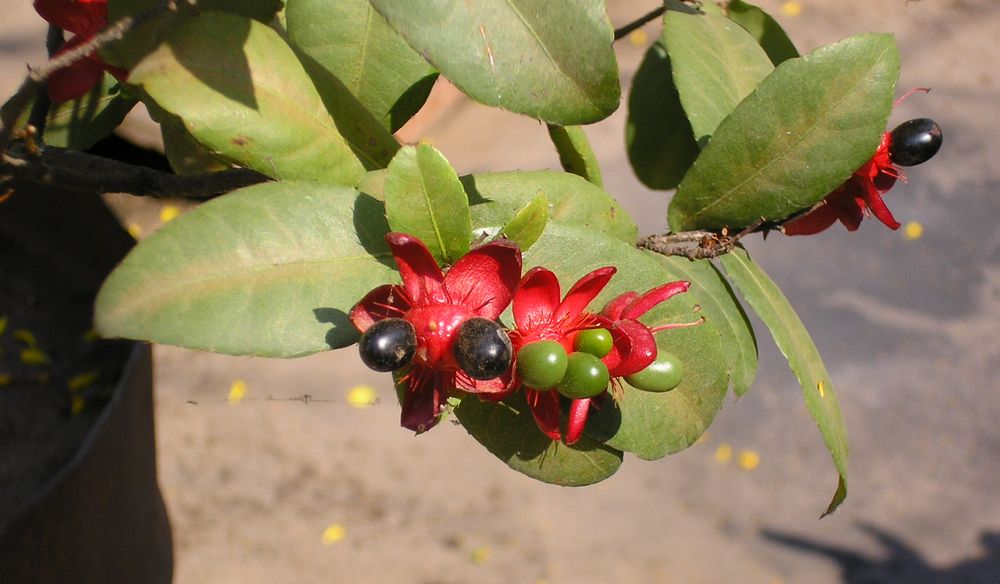
If in Laos the new year begins with the April rains, in Vietnam as in China, it begins with the first flowers of spring, and, among them, the “têt flower.” In Laos, where many Vietnamese live, the flowers appear before the leaves and you can see in the streets, since mid-January, these bare branches buried in containers of water in front of houses and shops. Indeed, the goal is for the flower buds to open exactly on the day of the feast, thus guaranteeing a prosperous and happy year. Once the party is over, the brilliant yellow flowers of this shrub bloom in our streets. Shortly after, the small round fruits appear, first green, then black, emerging from bright red sepals.
This lucky plant has a bitter bark which makes it a very good digestive tonic, it is also listed among the 30 main medicinal plants harvested in the forest reserve of Houaiyang, Laos, in 2005.
Si au Laos la nouvelle année commence avec les pluies d’avril, au Vietnam comme en Chine, elle débute avec les premières fleurs du printemps, et, parmi celles-ci la “fleur du têt.” Au Laos, où vivent de nombreux Vietnamiens, les fleurs apparaissent avant les feuilles et on peut voir dans les rues, depuis la mi-janvier, ces branches dénudées enfoncées dans des récipients d’eau devant maisons et magasins. En effet, le but recherché est que les bourgeons floraux s’ouvrent exactement le jour de la fête, garantissant ainsi une année prospère et heureuse. Une fois la fête passée, les fleurs d’un jaune brillant de cet arbuste s’épanouissent dans nos rues. Peu après apparaissent les petits fruits ronds, d’abord verts, puis noirs, émergeant de sépales rouge vif.
Cette plante porte-bonheur possède une écorce amère qui en fait un très bon tonique digestif, elle est d’ailleurs répertoriée parmi les 30 principales plantes médicinales récoltées dans la réserve forestière de Houaiyang, au Laos, en 2005.










If in Laos the new year begins with the April rains, in Vietnam as in China, it begins with the first flowers of spring, and, among them, the “têt flower.” In Laos, where many Vietnamese live, the flowers appear before the leaves and you can see in the streets, since mid-January, these bare branches buried in containers of water in front of houses and shops. Indeed, the goal is for the flower buds to open exactly on the day of the feast, thus guaranteeing a prosperous and happy year. Once the party is over, the brilliant yellow flowers of this shrub bloom in our streets. Shortly after, the small round fruits appear, first green, then black, emerging from bright red sepals.
This lucky plant has a bitter bark which makes it a very good digestive tonic, it is also listed among the 30 main medicinal plants harvested in the forest reserve of Houaiyang, Laos, in 2005.
Si au Laos la nouvelle année commence avec les pluies d’avril, au Vietnam comme en Chine, elle débute avec les premières fleurs du printemps, et, parmi celles-ci la “fleur du têt.” Au Laos, où vivent de nombreux Vietnamiens, les fleurs apparaissent avant les feuilles et on peut voir dans les rues, depuis la mi-janvier, ces branches dénudées enfoncées dans des récipients d’eau devant maisons et magasins. En effet, le but recherché est que les bourgeons floraux s’ouvrent exactement le jour de la fête, garantissant ainsi une année prospère et heureuse. Une fois la fête passée, les fleurs d’un jaune brillant de cet arbuste s’épanouissent dans nos rues. Peu après apparaissent les petits fruits ronds, d’abord verts, puis noirs, émergeant de sépales rouge vif.
Cette plante porte-bonheur possède une écorce amère qui en fait un très bon tonique digestif, elle est d’ailleurs répertoriée parmi les 30 principales plantes médicinales récoltées dans la réserve forestière de Houaiyang, au Laos, en 2005.


